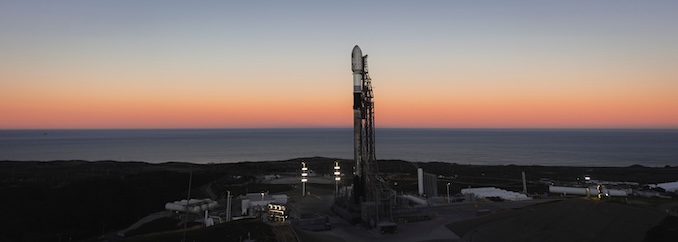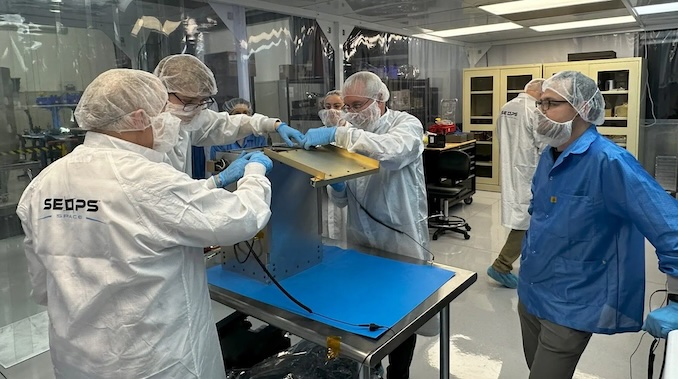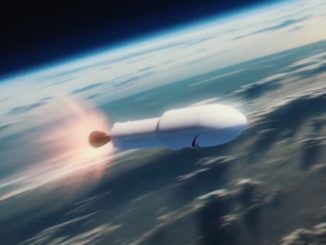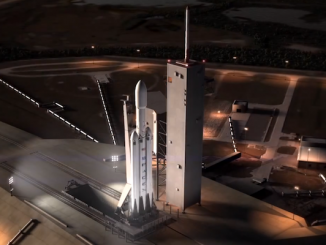
Update Nov. 28, 5:45 p.m. EST (2345 UTC): SpaceX deployed all payloads designed to separate from the rocket.
The second time proved to be the charm as SpaceX successfully launched 140 payloads onboard its Falcon 9 rocket at Vandenberg Space Force Base Friday morning. The flight came two days after SpaceX scrubbed the mission around the time liquid oxygen load was supposed to start on the rocket’s upper stage.
At the beginning of its launch broadcast, SpaceX commentators said the reason for the scrub was a ground systems issue.
Liftoff of the Transporter-15, the 19th mission of SpaceX’s Smallsat Rideshare program, happened at 10:44 a.m. PST (1:44 p.m. EST / 1844 UTC). The Falcon 9 rocket flew on a southerly trajectory upon departure from Space Launch Complex 4 East.
The Transporter-15 mission followed similar flights in January, March and June. SpaceX also launched the Bandwagon-3 and -4 rideshare missions to mid-inclination low Earth orbit in April and November.
SpaceX launched the mission using a veteran Falcon 9 first stage booster with the tail number B1071, one of the company’s most flown rockets with this being its 30th flight. This was the second booster that completed 30 missions to date.
B1071 previously launched five missions for the National Reconnaissance Office, four previous rideshare flights (three Transporter and one Bandwagon) and NASA’s Surface Water and Ocean Topography (SWOT) mission.
About 8.5 minutes after liftoff, B1071 performed an autonomous landing, targeting touchdown on the drone ship, ‘Of Course I Still Love You’. This was the 165th landing on this vessel and the 540th booster landing for SpaceX to date.
The deployment sequence began with the Toro2 spacecraft a little more than 54 minutes after liftoff and conclude with NASA’s Realizing Rapid, Reduced-cost high-Risk Research (R5) CubeSat nearly two hours later.

What’s onboard?
One of the benefits of the rideshare program is it offers payload providers multiple avenues to get their spacecraft on a trip to space for a reduced cost from a dedicated rocket launch. It also offers multiple lanes to get their satellites manifested onto the rocket.
One of those players is Seops Space, which uses a variety of deployment mechanisms to host and deploy customer payloads, including its Equalizer Flex, Ghost Trap Deployer and Keystone Separation System.

The Texas-based company was responsible for deploying 11 spacecraft onboard the Transporter-15 mission. Those included four spacecraft from Alba Orbital (Hunity/NMMH-1, Sari-1, Sari-2, and Aniscat), three from C3S (Wisdom-A, Wisdom-B and Mauve), three NASA-backed CubeSats (Tryad-1, Tryad-2, and 3UCubed-A) and SatRev’s PW-6U CubeSat.
“Every mission is different, and our strength lies in tailoring integration approaches for payloads that don’t fit a one-size-fits-all model,” said Chad Brinkley, chief executive officer of Seops in a statement. “We’re honored to support these organizations and the important work they’re doing to advance science, technology, and commercial innovation from space.”
MERCURY ONE has been successfully integrated by Exolaunch for @SpaceX #Transporter15 🛰️
Designed in 9 months using @Proteus_Space‘s MERCURY platform, it carries 4 payloads and will demonstrate novel deployment mechanisms, an AI experiment and a space qualification campaign 🚀 pic.twitter.com/yVuITYcaPI
— Exolaunch (@Exolaunch) November 21, 2025
Another key mission manager flying multiple customers was Exolaunch, which deployed 59 customer satellites from the Falcon 9’s upper stage. Those payloads included the T.MicroSat-1 from Taiwan’s Tron Future Tech; SPiN-2, a European Space Agency-backed CubeSat made primarily by Italian company Space Products and Innovation; and U.S.-based Care Weather’s Veery-0G “Brendan” satellite.
Topping the Transporter-15 stack, a position referred to as the ‘cake topper’ by SpaceX, was the Formosat-8 satellite from the Taiwan Space Agency (TASA). Also referred to as Chi Po-lin or FS-8A, the satellite is the first in a planned eight-satellite constellation consisting of optical remote-sensing spacecraft.
TASA said it plans to launch these spacecraft annually with the full constellation being deployed by 2031.




*”sounds complicated”* long #rocket_lab strong buy
Lmao I wonder what all the elon haters will come up with to complain about this one.. dont worry they will find something.